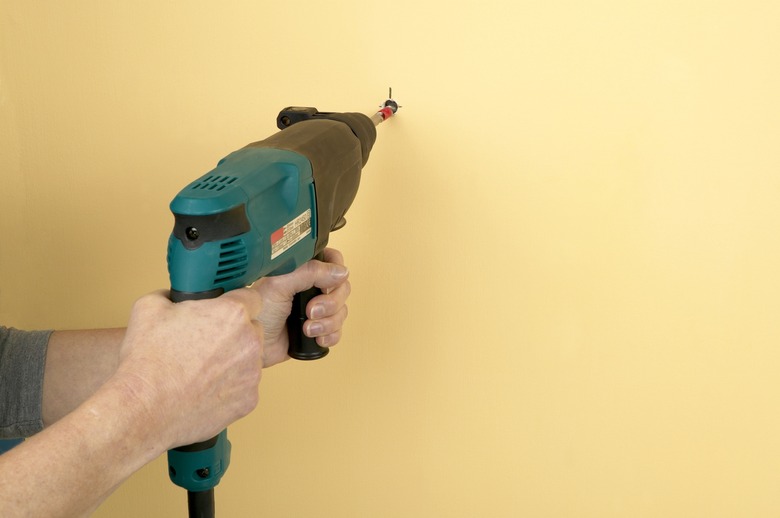Is My Drill Supposed To Spark?
We may receive a commission on purchases made from links.
Cordless and plug-in electric drills are useful for a range of household and building projects. However, like all power tools, they require users to take safety precautions. If you notice sparks coming from your drill, it might be cause for concern. In other cases, visible sparks inside the drill are part of normal operation.
Brushed Motor Sparking
Brushed Motor Sparking
Power drills typically use direct-current, brushed motors to convert electrical energy into the motion that drives the spinning drill bit. Brushed DC motors control electromagnetic fields around a commutator, where the brushes produce sparks from the electromagnetic charge. In some electric drills, these sparks are clearly visible through an opening in the drill body. This type of spark, which occurs whenever the drill is running at any speed, is a normal part of the drill's operation.
DC Drill Safety
DC Drill Safety
If your electric drill has a brushed DC motor, it is supposed to spark. However, the sparks should be consistent and relatively contained inside the drill. The presence of sparks does mean that you should take special precautions. Even small, contained sparks can ignite debris such as sawdust from drilling wood. Sparks can also ignite flammable gas, so working in a clean, well-ventilated area is important.
Battery Sparks
Battery Sparks
Cordless electric drills use battery packs for portability. These drills might not produce internal sparks at the site of the electric motor as part of normal operation. However, they should never spark around the battery compartment. If the battery sparks while installed in the drill, or produces sparks even when it's not attached to the drill, it is likely shorting out. Cleaning the battery's contacts might solve the problem, but in other cases a sparking battery isn't safe and requires replacement.
Other Sparks
Other Sparks
Any sparks that come from a drill intermittently are signs of problems. If your drill produces sparks where the power cord enters the drill body, or if the power cord sparks where it's plugged into a wall outlet, you should avoid using the drill until you can have the cord repaired. If the bit you're using sparks while drilling it might be contacting metal fragments inside the wood or composite material that you're drilling, which should serve as a sign that continued drilling will damage the bit. Other spontaneous sparks could indicate problems with the drill's motor that can be potentially dangerous.
